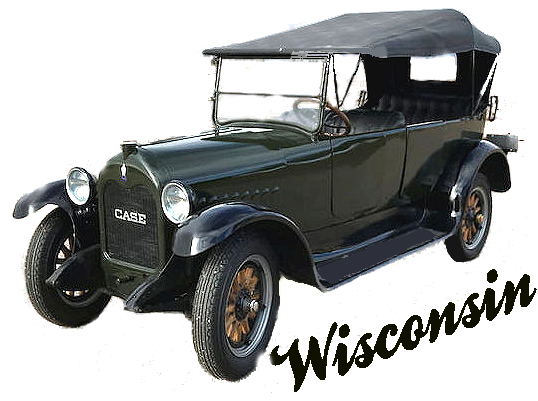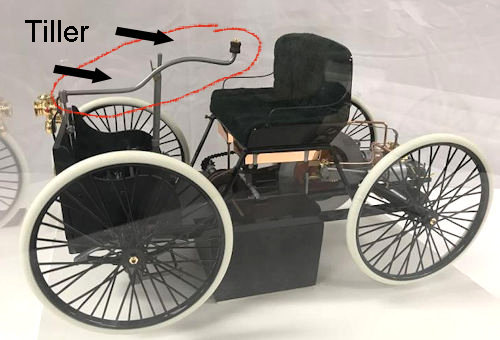


Mobile users:
For best results, view in Landscape mode.
Steering Wheel History:
The earliest known use of a steering
wheel was in 1894 by Alfred Vacheron
who entered the famous Paris-Rouen
race in France which he fitted his
vehicle with a steering wheel.
In America, the first automobiles
were steered with a tiller, like they
have on sailboats.

When the first cars hit the road,
then were abstractions of the
horse carriage.
The driver guided the horses with
reigns, pulling left to turn left and right
to go right. Empowered with the
accelerator and the brakes,
a good tiller was all one needed to
have complete control of the car.
Adopting a similar system to the
first cars only made sense.
Early engineers wanted to direct the
carriage much the same way.
The closest steering system to
this at the time was the tiller.
In 1898, Thomas B. Jeffery and
his son, Charles, developed two
advanced experimental cars featuring
a front-mounted engine, as well as a
steering wheel that was mounted on
the left-hand side.
However, they adopted a more
conventional rear-engine and tiller
steering layout for its first mass
produced Ramblers in 1902.
The following year, the Rambler Model E
was largely unchanged, except that it
came equipped with a tiller early in the
year, but with a steering wheel by the
end of 1903.
Most other car manufacturers began
offering cars with left-hand drive
in 1910.
Soon after, most cars in the U.S.
converted to left hand drive.
The Thomas B. Jeffery Company was
an automobile manufacturer in
Kenosha, Wisconsin from 1902 until
1916, when Nash Motors took
over the company.
In 1904, all Ramblers featured
steering wheels.
Within 10 years, the steering wheel
had entirely replaced the tiller
in all automobiles.
In 1951, Chrysler Corporation
introduced the first commercially
available passenger car power steering
system on the Chrysler Imperial
under the name "Hydraguide".
There are two basic types of power
steering systems used on cars.
The rack and pinion steering
system and the conventional/integral
steering gear system, which is also
known as a recirculating ball
steering system.
In the 1960's, car manufacturers
began adding other features like:
tilt steering, steering column cruise
control features on the steering
wheel.
In the early 1990's most car
manufacturers thought it was
important to put gadgets on their
steering wheels.
Besides cruise controls, they
added controls for the car's computer,
the car's audio system and lots
of other stuff.
Today’s cars steering wheels have
become captain seat control centers,
where you can control climate,
the audio features, take calls,
and more.
Why we drive on the right side
of the road in America?
Due to the large population of
right-handers, carriage drivers would
use their left hand to hold the horse
reins, while holding a whip in
their right hand.
Also, many farmers used large wagons
pulled by several pairs of horses
to transport farm produce.
Since the wagons didn't have a
driver’s seat, the driver sat on the
left rear horse, so he could keep
his right arm free to lash the team.
Since he was sitting on the left, he
wanted other wagons to pass
on the left so he kept to the
right side of the road.
In 1792, a law was passed mandating
that horse carriages must travel along
the right-side of the road, so it was
widely accepted that steering should
take place on the right.
In Amish communities, horse
buggies are still steered in
this manner today.
When mass production of cars in
the U.S. began, it was widely viewed
that right-hand steering was the
preferred method.
In 1908, Ford introduced left-hand
steering.
Most other car manufacturers began
offering cars with left-hand drive in
1910.
Soon after, most cars in the U.S.
converted to left hand drive.
